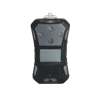
Gas Type by Volatile Organic Compound Gases
What is VOC Gas?
VOC gas refers to Volatile Organic Compounds in the gaseous state. Volatile Organic Compounds are organic chemicals that have a high vapor pressure at room temperature, which means they can easily evaporate into the air as gases. VOCs encompass a wide range of organic chemicals that can be emitted from various sources, including industrial processes, vehicle emissions, and everyday products such as paints, solvents, cleaning agents, and perfumes.
These compounds can have both natural and anthropogenic (human-made) sources. Some VOCs are considered air pollutants because they can contribute to the formation of ground-level Ozone and smog, which have adverse effects on air quality and human health. Additionally, some VOCs can have harmful health effects when inhaled, so gas detectors and monitors are important for environmental and health reasons.
Types of Volatile Organic Compound Gases
Volatile Organic Compounds (VOCs) encompass a diverse group of organic chemicals that exist in the gaseous state at room temperature due to their relatively high vapor pressure. These compounds are commonly found in the atmosphere and can originate from various sources, both natural and human-made. Here are some common types of VOC gases:
Notes
- Formaldehyde (CH2O): Sometimes classified separately as a carbonyl compound but generally included as a VOC due to high volatility.
- Acetylene (C2H2): Explicitly qualifies as a VOC (carbon-based and volatile), though industrial standards may prioritize its flammability.
Gas Detectors for VOC Gas Detection
Gas detectors can detect VOC gases, including Ethylene, Formaldehyde, Methane, and Methyl Bromide, which are essential tools used to ensure safety in various settings. GasDog offers a range of gas detectors for the detection and monitoring of VOC gases. This series encompasses portable detectors, fixed single-gas detectors and multi-gas detectors to meet various industrial and environmental safety needs. Whether you require the flexibility of a portable VOC detector for on-the-go monitoring, the stability of fixed single gas detectors for continuous surveillance in specific locations, or the comprehensive capabilities of composite detectors that can detect multiple gases simultaneously, GasDog's VOC monitors are designed to cater to your diverse requirements, ensuring the utmost safety and compliance in challenging environments.



